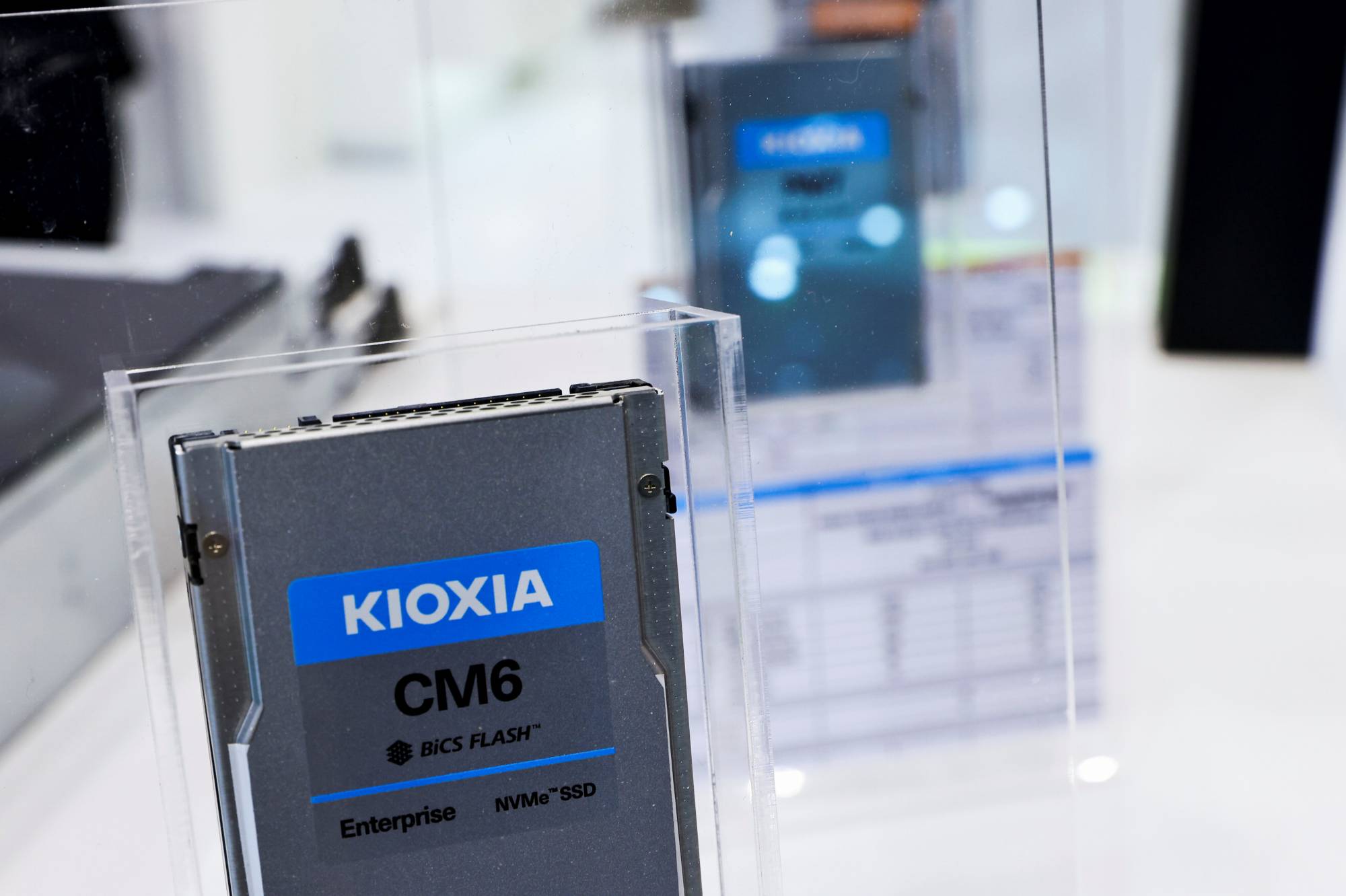
Kioxia, a chipmaker backed by Bain Capital, is gearing up to submit a preliminary application to list shares on the Tokyo Stock Exchange in the coming days, according to two people familiar with the matter. The company plans to follow up with a full application in August and aims for a listing at the end of October. However, the timeline might extend to December, these sources revealed.
Bain Capital, which led a consortium to acquire Toshiba’s memory unit in 2018, intends to recoup its investment through the sale of shares. Meanwhile, Kioxia is looking to bolster its finances by issuing new shares. Despite these developments, Kioxia has not provided any updates on its initial public offering (IPO) plans and declined to comment on the listing procedures.
Kioxia’s listing strategy is being advised by Mitsubishi UFJ Morgan Stanley Securities (MUMSS) and Nomura Securities, though neither firm, nor Bain, has commented on the matter.
The move comes as Kioxia hopes to take advantage of improving market conditions. The chipmaker had previously postponed an IPO in 2020 due to global chip market uncertainties stemming from U.S.-China trade tensions. Initially, Kioxia targeted a market capitalization of over 2 trillion yen ($12.68 billion), later revising it down to 1.7 trillion yen.
Kioxia’s financial performance has been mixed. For the fiscal year ending in March, the company reported an operating loss of 253 billion yen. However, it also noted its first profitable quarter in six quarters, driven by higher chip prices. Average selling prices increased by around 20% on a U.S. dollar basis during the January-March quarter, Kioxia announced in May.
Several factors are contributing to the rising chip prices. According to researcher TrendForce, investments in servers for artificial intelligence tasks and the replenishment of inventory by smartphone and PC customers are boosting prices.
In a bid to strengthen its financial position, Kioxia recently refinanced loans worth approximately 540 billion yen and secured an additional 210 billion yen loan facility. This move highlights the company’s efforts to stabilize its finances ahead of the anticipated IPO.
Previously, Kioxia was involved in merger discussions with Western Digital, but these talks stalled due to opposition from Kioxia investor SK Hynix. Despite this setback, industry experts continue to see consolidation as a necessary step for the sector.
| Milestone | Date |
|---|---|
| Preliminary Application Submission | Coming days |
| Full Application Submission | August |
| Expected Listing Date | End of October |
| Potential Extended Listing Date | December |
- Market Conditions: Kioxia aims to capitalize on favorable market trends, including increased investments in AI and inventory replenishments.
- Financial Moves: The company recently refinanced significant loan amounts to secure a stable financial footing.
- IPO Delays: Previous IPO plans were delayed due to global trade tensions, with the new timeline potentially extending to December.
- Investor Dynamics: Merger talks with Western Digital were halted by opposition from SK Hynix, though consolidation remains a topic of interest.
- Profit and Loss: Despite a substantial operating loss, Kioxia recorded a profitable quarter due to rising chip prices.
Kioxia’s listing plans come at a critical time for the global semiconductor industry. The company’s efforts to go public signal confidence in the market’s recovery and its potential for growth. The semiconductor sector has been volatile due to various global issues, including trade tensions and supply chain disruptions, but the rising demand for chips, especially in AI and computing, presents significant opportunities.
Kioxia’s journey from Toshiba’s memory unit to a potential IPO reflects broader industry trends. The acquisition by Bain Capital and its consortium marked a significant shift, with private equity playing a crucial role in the semiconductor industry’s restructuring. The anticipated IPO could set a precedent for other companies considering similar moves in the evolving market landscape.
Industry analysts believe that Kioxia’s decision to list now is well-timed. “The semiconductor market is showing signs of robust recovery, and Kioxia’s move to go public could leverage this momentum,” said a market analyst from TrendForce. The rising prices and increased demand underscore the sector’s resilience and potential for sustained growth.
However, the road to listing is fraught with challenges. Market conditions, investor sentiment, and geopolitical factors could all influence the final outcome. Kioxia’s ability to navigate these complexities will be crucial in determining the success of its IPO.
Looking ahead, Kioxia’s IPO could have far-reaching implications for the company’s strategic direction and the broader semiconductor market. A successful listing would provide the company with the capital needed to invest in new technologies and expand its market presence. Moreover, it could pave the way for other chipmakers to consider public offerings, further shaping the industry’s future.
As Kioxia prepares for its IPO, the company’s actions and market responses will be closely watched. The upcoming months will be critical in shaping the trajectory of both Kioxia and the semiconductor sector at large.
Related News:
Featured Image courtesy of The Japan Times
